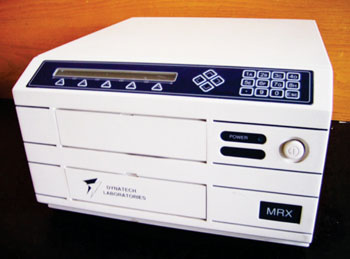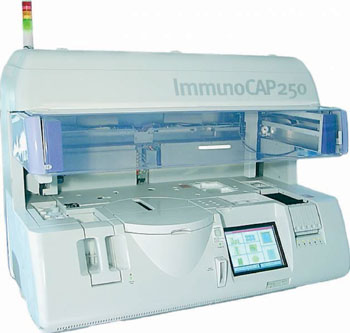Antibody Test Predicts Cold-Related Asthma Attacks
By LabMedica International staff writers
Posted on 18 Dec 2014
A diagnostic marker can be used to identify the risk group for asthma attacks caused by rhinoviruses and this can be assessed with a simple antibody test.Posted on 18 Dec 2014
Rhinoviruses (RVs) are the most common cause of respiratory illnesses in children and adults of all ages and are responsible for more than half of all acute exacerbations of asthma and chronic obstructive pulmonary disease (COPD).
Immunologists at the Medical University of Vienna (Austria) working with their colleagues in the UK studied the response to infections with RV16 that were induced in 28 asthmatic patients (11 with mild asthma and 17 with moderate asthma and 11 healthy adult individuals. The healthy adult subjects were non-smoking, non-atopic and non-asthmatic volunteers aged 21 to 55 years. Patients with mild asthma were aged 19 to 53 years taking only short-acting β2 agonists (SABA). The patients with moderate asthma, aged 20–54 years were on SABA) plus inhaled corticosteroid therapy.
Total immunoglobulin E (IgE) levels were measured using ImmunoCAP technology (Phadia; Uppsala, Sweden); healthy median: was 16 IU/mL; mild asthmatics median: was 207 IU/mL; and moderate asthmatics median was 132 IU/mL. Enzyme-linked immunosorbent assays (ELISA) were performed with expressed and purified recombinant RV coat proteins VP1-4, nonstructural proteins as well as N-terminal fragments of VP1 from four RV strains (RV14, 16, 89, C) covering the three known RV groups (RV-A, RV-B and RV-C) and measured specific IgG-subclass-, IgA- and IgM-responses in subjects with different severities of asthma or without asthma before and after experimental infection with RV16. The optical density (OD) values corresponding to the levels of antigen-specific antibodies were measured at 405 and 490 nm in an ELISA reader (Dynatech; Denkendorf, Germany).
The results of the subsequent antibody tests using recombinant virus antigens that were developed showed that the asthmatics who experienced attacks expressed significantly higher antibodies to the structure protein VP1, which is found in all of the known 150 or so rhinovirus strains, than any of the other subjects. The raised antibody response to VP1 now allows all individuals who need particular protection against colds to be identified.
The authors concluded that ultimately serological tests may be helpful for identifying the most common and clinically relevant rhinovirus strains involved in asthma exacerbations and to investigate in cross-sectional studies the possible role of rhinovirus infections in other respiratory diseases, in different geographic populations and age groups including not only children but also adults and elderly persons. The study was published on November 18, 2014, in the journal EbioMedicine.
Related Links:
Medical University of Vienna
Phadia
Dynatech















